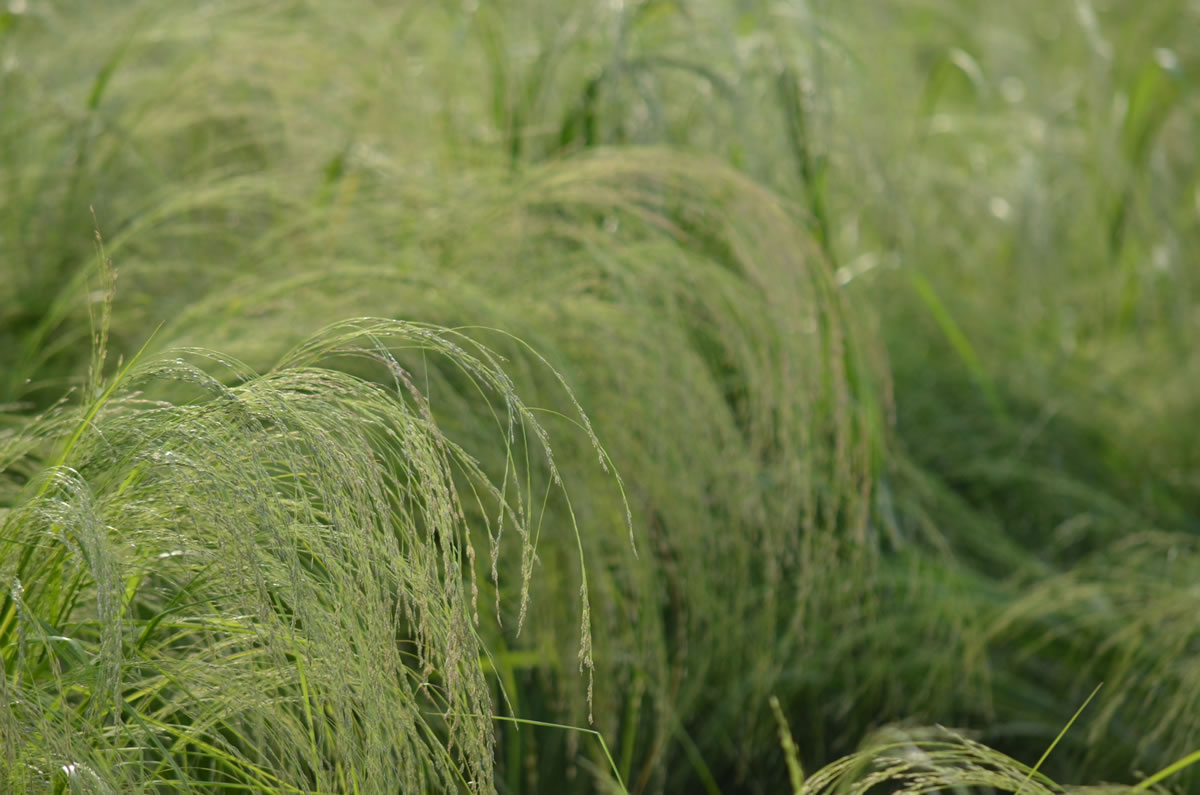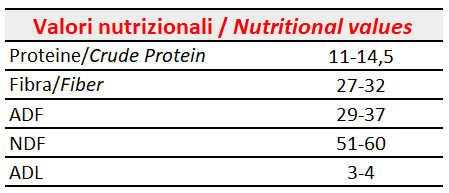Teff, the highest quality summer hay

Teff, a gluten-free cereal well known for the nutritional qualities of the grain, is a plant with many qualities that can be used for different purposes. In recent years, this cereal is making its way as a fodder plant in Europe. Its use in the livestock sector, which has already been widespread in the United States for decades, is constantly growing and this is due both to its excellent nutritional values and to the agronomic benefits it can grant.
Teff is a plant with low water requirements and great resistance to high temperatures, therefore it can also be grown as a second crop (it is also called “summer ryegrass”) and is able to guarantee up to three cuts in a season. Its thin stem and very fine leaf make it very palatable, and its hay is highly appreciated by all types of livestock, especially cattle and horses (for horses it is considered a “premium” forage).
The sowing period varies according to the geographical area, in the southernmost areas of Europe (southern Italy and southern Spain) it can be sown from the end of March until the end of June, in northern areas the sowing period begins later, in the band between central Italy and southern France, the sowing period for teff goes approximately from the end of April to mid-July.
In the case of late sowing, which normally occurs in June or early July, irrigation may be necessary after sowing. In fact, even if teff manages to exploit the humidity of the soil very efficiently, in summer, with very long days and very high temperatures, it could suffer in the first stage of life.
The growth of the plant is very rapid, the first mowing takes place between 45 and 60 days from emergence, in late sowing the cycle is normally shorter thanks to the higher temperatures. The following mowings usually take place every 35-45 days. On irrigated land, teff can guarantee up to three mowings, in the southernmost areas of Europe, it is possible to make even four mowings. Productivity is not very high, in any case it is possible to produce from 1,500 to 2,000 kg/Ha of dry matter for each mowing, on irrigated land it is possible to reach 6,000 kg per season.
From an agronomic point of view, teff is considered a rustic plant thanks to its ability to adapt to almost all types of soil, its ability to compete with weeds and its resistance to drought and high temperatures. However, to ensure excellent results it is necessary to carry out perfect work during the pre-sowing and sowing stages. Like all small seeds (and teff is really very small) the preparation of the seed bed and sowing must be very accurate, the soil must have good humidity (this aspect may not be so important on irrigated crops) and the soil temperature must not be lower than 16°C. The sowing depth must be approximately 0.5 cm and, in any case, not greater than 1 cm. Rolling before sowing is a good solution to prevent the seed from going too deep.
Mowing must be carried out at a height of at least 10 cm from the ground to encourage the regrowth of the plant for subsequent mowing. Although it is a plant with low water requirements, watering after each mowing certainly guarantees better results and shorter growth times.
Why do large livestock companies
choose Teff as fodder?
- Fast growing plant (2-3 summer mowings)
- It can also be grown as second crop
- It is tolerant to drought and high temperatures
- Excellent palatability and nutritional values
- Excellent for hay, silage and grazing
Even from a nutritional point of view, teff is able to guarantee high quality livestock feed products, both when used for hay and in other forms, such as silage or pasture. The first important characteristic of teff is its palatability, which makes livestock prefer it to many other types of forage, but even more important are the nutritional values. Teff hay, compared with that produced by other summer annual plants, showed significantly higher values both in terms of quality and in terms of milk production. Below is a table with the average nutritional values of teff hay:
Would you like to grow Teff in your farm?
We can provide you high quality seeds of white and brown teff
Click here to find out more
Based on the information available in the literature, on the results of research carried out (especially in the US) and according to our experience we can assert that the value of this plant for a livestock farm is truly significant, and not only for its nutritional values and qualities, but also for its economic benefits. Teff is in fact able to provide very high-quality forage in summer, also as second crop. But there is an even more important aspect that we were able to clearly appreciate in 2023 in Italy, when at the beginning of the summer many livestock farms had to deal with poor quality spring hay due to continuous and excessive rainfall. Teff has been the salvation of many of these farms, which in a complicated situation have sown it as second crop and achieved to stock excellent quality teff hay.


